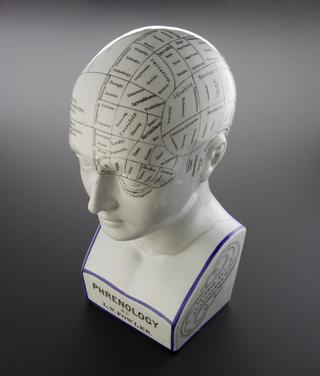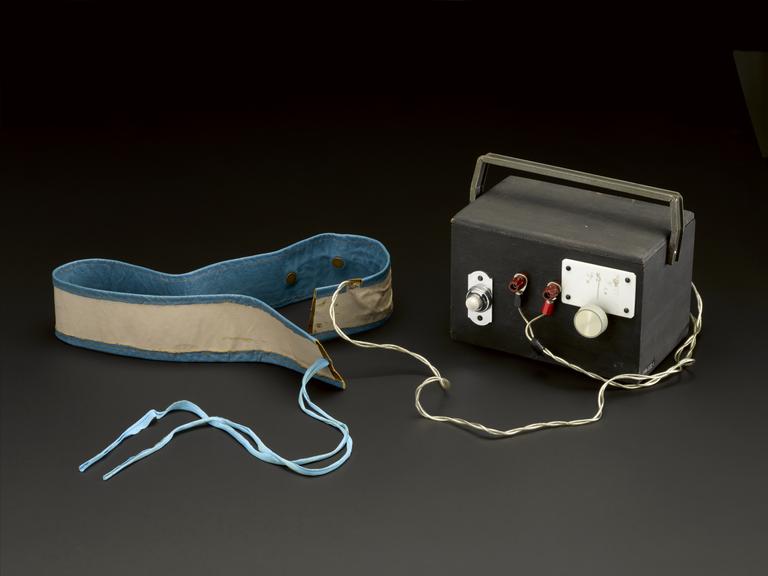
















Illicit aversion therapy apparatus from St. Francis Psychiatric Hospital, Sussex, England, 1950-1980.
Aversion therapy is a form of psychological conditioning designed to make a person avoid or give up habits considered undesirable. First used in the 1930s to treat alcoholism, aversion therapy has since been used to treat other behaviours deemed ‘unacceptable’ ranging from phobias and addictions, through to homosexuality.
As recently as 1974, homosexuality was officially considered a psychiatric illness. The concept of same sex attraction as a medical or psychological condition was introduced at the end of the 19th century and this medicalisation of sexuality was seen to legitimise treatments to ‘correct’ it. This device is said to have been used in the treatment of homosexual people at a psychiatric hospital in Brighton in the mid-20th century. During the therapy, patients were exposed to certain stimuli, such as pornographic imagery featuring people of the same sex. Simultaneously, electric shocks of varying strengths and durations were administered to the person’s fingers or hands. This was thought to diminish homosexual desires or even transform an individual’s sexuality.
Techniques intended to ‘cure’ those outside of the so-called heterosexual norms, had become commonplace within psychiatric institutions and NHS hospitals by the 1950s, and though sexual relationships between adult men in private were decriminalised in Britain in 1967, treatments such as aversion therapy continued to be used. Many individuals are said to have volunteered themselves for treatment, often as a result of societal pressures, whilst others arrived through the criminal justice system. Prior to 1967, convicted gay and bisexual men faced a maximum sentence of life in prison in the UK, and many were forced to undergo treatment as part of their sentence. Others opted to undergo treatment as an alternative to imprisonment.
The labelling of homosexuality as a disease and a crime led to discrimination and the infringement of what we now consider basic human rights. For many, treatments such as aversion therapy reinforced the emotional isolation, fear and shame already felt by those considered outside of the sexual ‘norm’. In the 1970s gay rights activists (including psychiatrists) protested that they were in no need of being ‘cured’. Attitudes within the psychiatric community gradually shifted and in 1973 the American Psychiatric Association removed homosexuality from its ‘Diagnostic and Statistical manual of Mental Disorders’.
Details
- Category:
- Psychology, Psychiatry & Anthropometry
- Object Number:
- 1996-271/24
- Measurements:
-
overall: 135 mm x 900 mm x 135 mm, 1.99kg
- type:
- electrotherapy machine
- credit:
- Princess Royal Hospital




